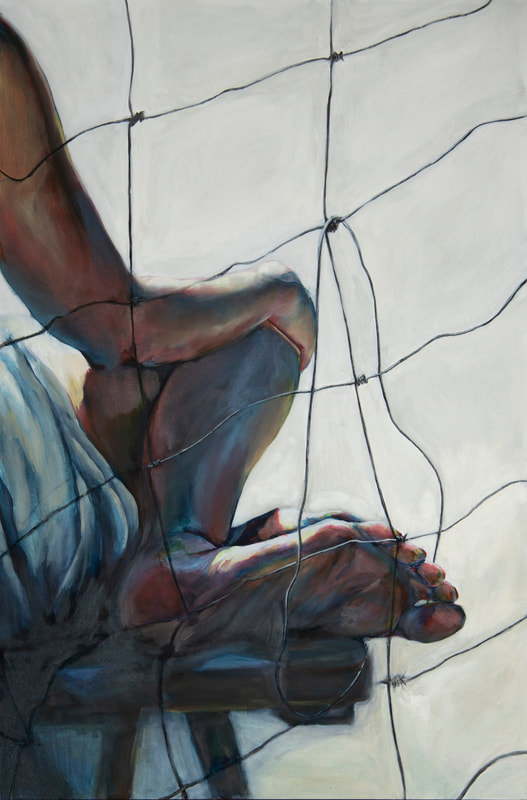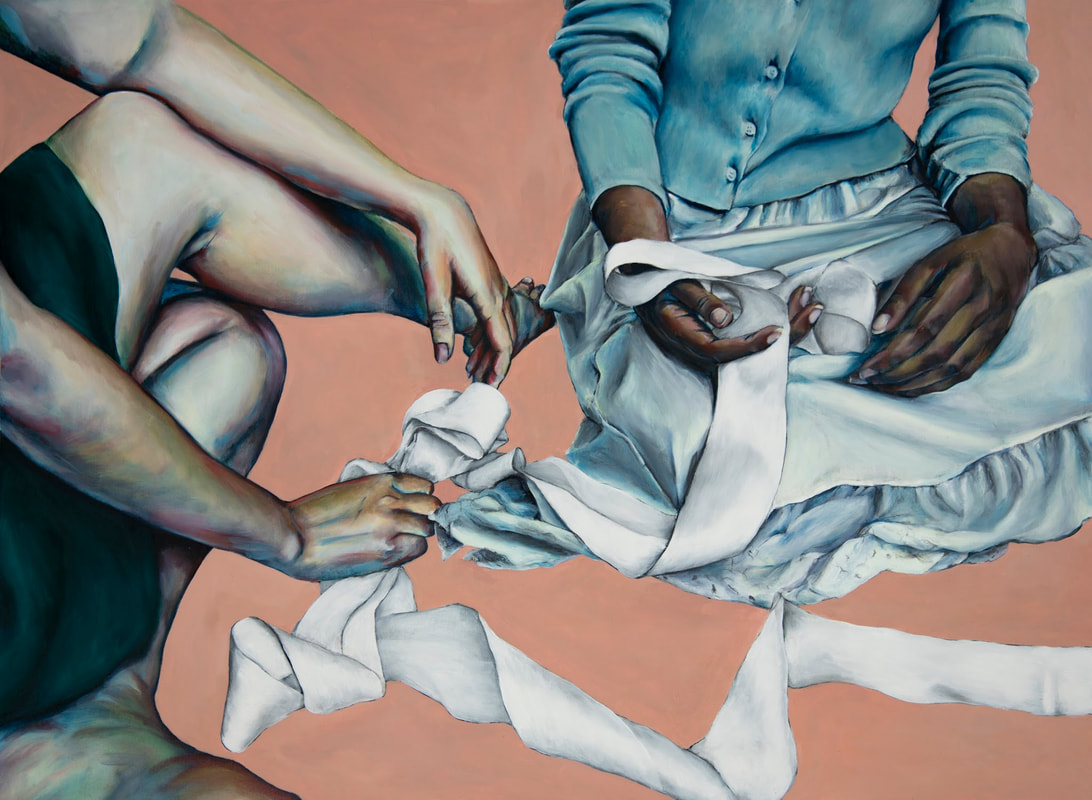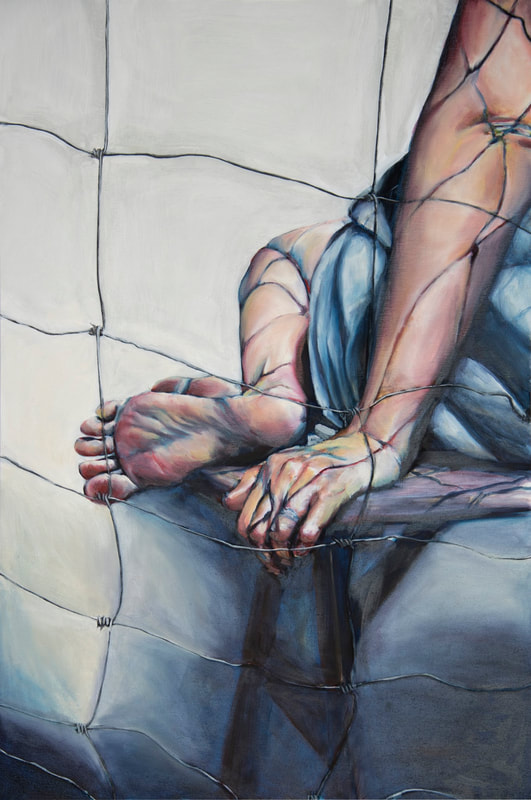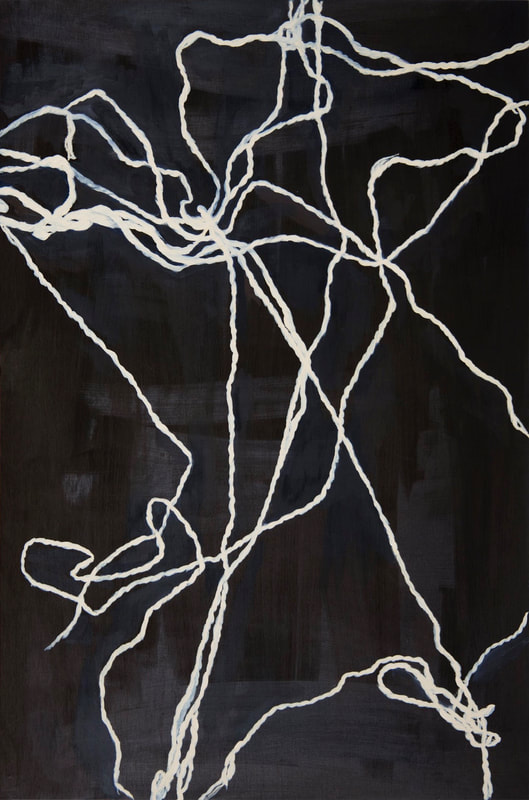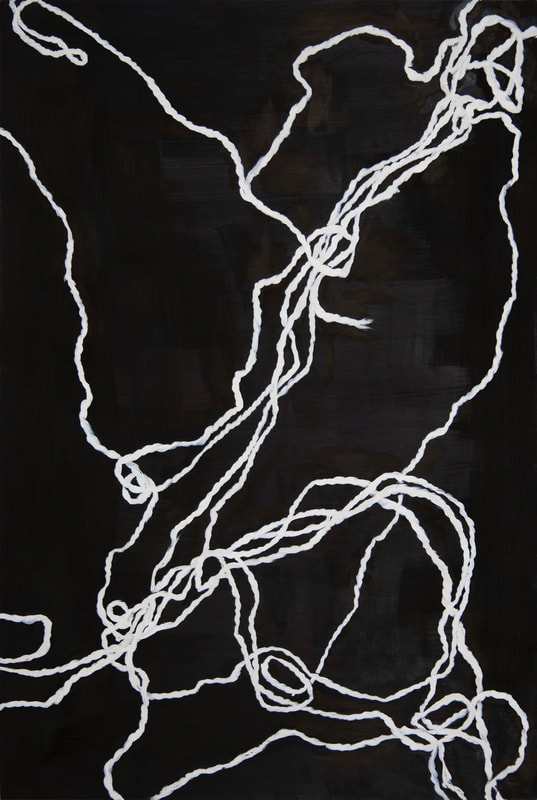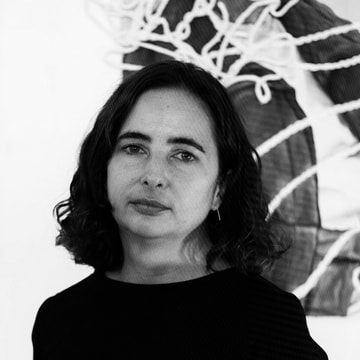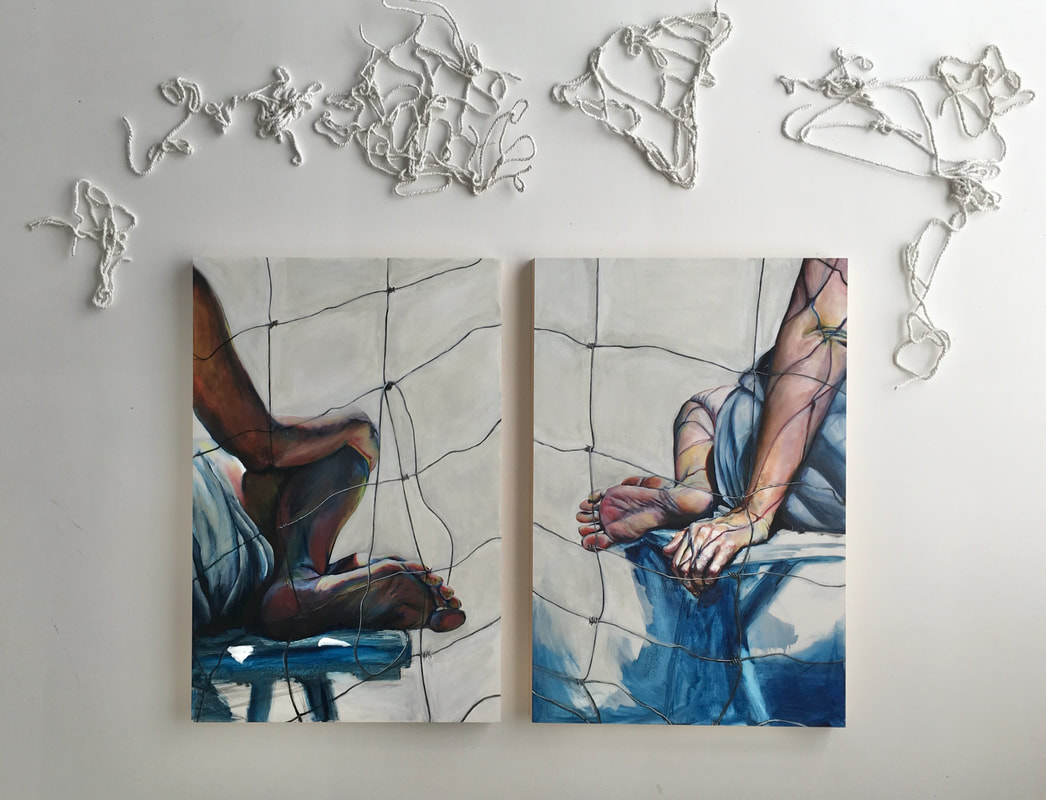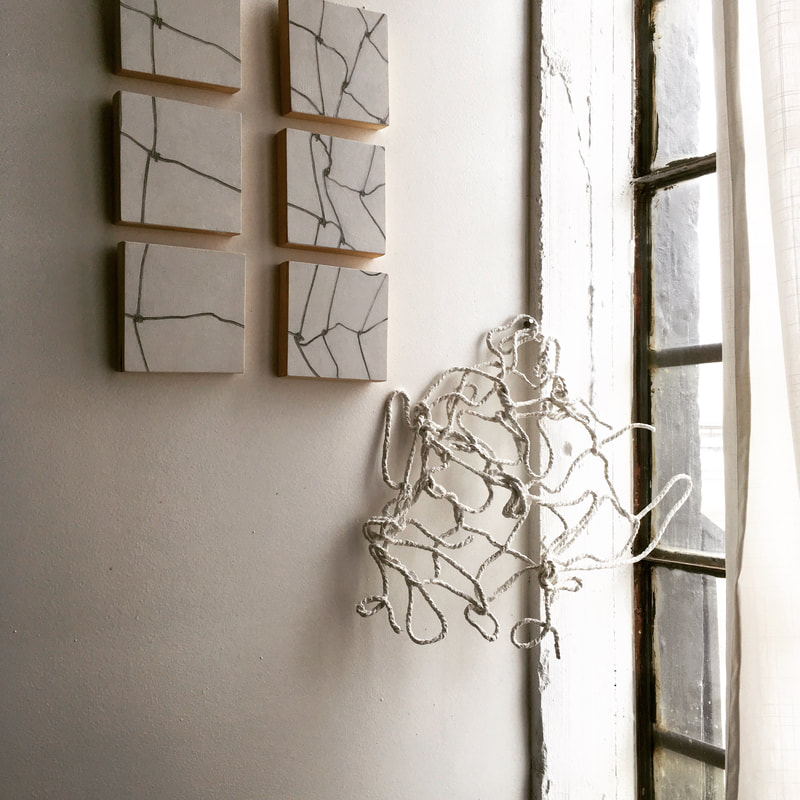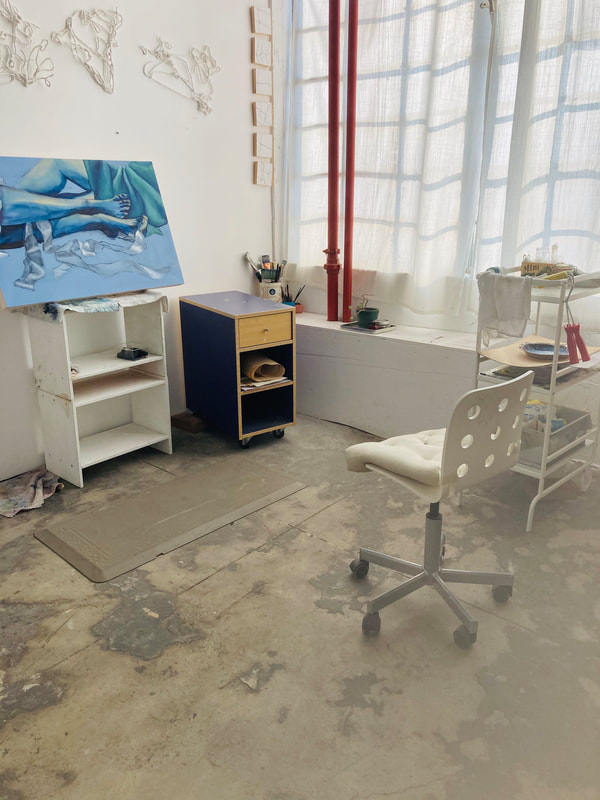Anne Garvey is a contemporary visual artist based in Oakland, California. A graduate from the San Francisco Art Institute and Saint Mary’s College, she has exhibited, taught, and collaborated with fellow artists at home and abroad. Garvey works in a variety of media, but is primarily known for her realistic paintings of people and tangled objects. Her art centers around the inner human experience of a variety of mental states. Tangled elements, such as cords, yarn, and chains, serve as metaphors for different states of mind, and invite the viewer to contemplate our common struggles. Her current body of work focuses on anxiety, trauma, and resilience through personal interviews, research, and source imagery that eventually result in drawings, paintings, and installation. In 2019, Garvey was an artist-in-residence at the North Street Collective in Mendocino County, California, and a participant in the Perception Project in Los Angeles. Her work has been published in Memoir Magazine, TWIRL: a Decade of Artist Interviews, and, most recently, ArtMusicLit Space. In 2020, Garvey’s paintings were selected to be exhibited in the upcoming De Young Open at the De Young Museum in San Francisco.
Published on May 6th, 2021. Artist responses collected in months previous.
What hurdles have you overcome this year and how have they affected your art practice?
There were prolonged periods of time that I could not be in my art studio, just before and during the shelter-in-place orders. Although I didn’t mind being at home necessarily, there was simply no way for me to work on the larger oil paintings I had started, so I had to put them aside. Galleries were shutting down, grants were being cancelled, and for a while it was difficult to figure out what the art practice even was anymore. Although I did manage to do some smaller paintings, I found it difficult to be fully engaged in the work. I decided to focus mainly on other areas of my life such as home and my teaching career. I ended up finding a teaching position that better supported my overall values, was closer to home, and I believe will be better integrated with my art practice. I also used the time to support my art practice in other ways, such as revamping my website and taking a hard look at the finances.
How has your art practice been affected by the pandemic?
At first it was frustrating not to be able to do the work I had set out to do in the studio. I suppose everyone has been frustrated, at the very least, by not having a “normal” life anymore. But one of the unexpected positive outcomes has been that I was suddenly thrown off of the endless merry-go-round of researching, writing, applying for opportunities. My art practice and my life became much more simple and calm for a while. I had time to reflect about the conceptual basis for my work, and experience a renewed love for the materials. I’m more focused than ever on my current body of work, and I just have to have faith that there’s a time and place for everything. I am now starting to see, mostly through social media, that there are so many people out there finding creative ways to connect with others through art. In spite of the restrictions involved, (probably directly because of them), I have connected with fellow artists more than ever, through online exhibits, zoom artist talks, etc. Ironically, I think I’ve come out of my shell and increased my engagement with the art world.
What support systems have you put in place to help keep your practice thriving amidst these unforeseeable circumstances?
Those online support systems, even though I’d rather connect with humans face-to-face, have been key to keeping my sanity throughout this pandemic. I am recognizing how imperative it is that we care for each other as an art community, locally and globally. I am so fortunate to still have studiomates that I run into (safely distanced of course), and one very close friend/fellow artist that I check in with on a regular basis. We discuss current projects, challenges, life in general, and it’s incredibly supportive. It’s impossible to predict what the future holds, and that’s especially apparent this year. Practically speaking, I have become more attentive to financial matters, specifically having a plan ‘B’ or ‘C’ in case I have to move out of my current studio or suffer a loss of income. All in all, though, I still consider family, friend, and community to be the most important support systems.
What methods do you employ to stay resilient in your art practice? What tips would you recommend to other artists who find staying resilient difficult?
It’s been helpful to remind myself that this is a difficult time for every artist- nothing looks or feels the same as it did before, but that’s ok. There’s no way to avoid challenges and rejection if you’re going to fully engage in an art practice- you just have to keep working. Artists are the best at believing there’s a way when no one else thinks that there is. I was just telling my good friend that sometimes people think I’m too optimistic, and she corrected me saying: you’re not blindly optimistic, you’re resilient. That optimism stems from those experiences over time of getting back on your feet and going to the studio, sitting in front of that painting, and knowing that the practice is moving forward with you. If you still have those dark days (and who doesn’t?) find other artists to talk to- writers, performers, painters, whatever. They are out there and understand. Hell, I’ll talk about art anytime, hit me up!
What have you learned about yourself as an artist this year?
I learned that I’m still an artist no matter how many hours I was able to get into the studio that day or that month- and that the second I got that panel back in front of me, I was as excited to paint as ever. The shelter-in-place forced all of the separate pieces of my life to blur together: teaching, the art practice, my home life. Initially this was very stressful, but now I see that I’m the same person, with the same thoughts, emotions, reactions, values, no matter what my role is. So, as an artist, I am confronting the same issues of confusion, empathy, injustices, and resilience that I witness as a teacher or in my community. Most of all, this year has shown me that I am more resilient than I thought, and that I am more so due to the connections with others in the same boat.
What hurdles have you overcome this year and how have they affected your art practice?
There were prolonged periods of time that I could not be in my art studio, just before and during the shelter-in-place orders. Although I didn’t mind being at home necessarily, there was simply no way for me to work on the larger oil paintings I had started, so I had to put them aside. Galleries were shutting down, grants were being cancelled, and for a while it was difficult to figure out what the art practice even was anymore. Although I did manage to do some smaller paintings, I found it difficult to be fully engaged in the work. I decided to focus mainly on other areas of my life such as home and my teaching career. I ended up finding a teaching position that better supported my overall values, was closer to home, and I believe will be better integrated with my art practice. I also used the time to support my art practice in other ways, such as revamping my website and taking a hard look at the finances.
How has your art practice been affected by the pandemic?
At first it was frustrating not to be able to do the work I had set out to do in the studio. I suppose everyone has been frustrated, at the very least, by not having a “normal” life anymore. But one of the unexpected positive outcomes has been that I was suddenly thrown off of the endless merry-go-round of researching, writing, applying for opportunities. My art practice and my life became much more simple and calm for a while. I had time to reflect about the conceptual basis for my work, and experience a renewed love for the materials. I’m more focused than ever on my current body of work, and I just have to have faith that there’s a time and place for everything. I am now starting to see, mostly through social media, that there are so many people out there finding creative ways to connect with others through art. In spite of the restrictions involved, (probably directly because of them), I have connected with fellow artists more than ever, through online exhibits, zoom artist talks, etc. Ironically, I think I’ve come out of my shell and increased my engagement with the art world.
What support systems have you put in place to help keep your practice thriving amidst these unforeseeable circumstances?
Those online support systems, even though I’d rather connect with humans face-to-face, have been key to keeping my sanity throughout this pandemic. I am recognizing how imperative it is that we care for each other as an art community, locally and globally. I am so fortunate to still have studiomates that I run into (safely distanced of course), and one very close friend/fellow artist that I check in with on a regular basis. We discuss current projects, challenges, life in general, and it’s incredibly supportive. It’s impossible to predict what the future holds, and that’s especially apparent this year. Practically speaking, I have become more attentive to financial matters, specifically having a plan ‘B’ or ‘C’ in case I have to move out of my current studio or suffer a loss of income. All in all, though, I still consider family, friend, and community to be the most important support systems.
What methods do you employ to stay resilient in your art practice? What tips would you recommend to other artists who find staying resilient difficult?
It’s been helpful to remind myself that this is a difficult time for every artist- nothing looks or feels the same as it did before, but that’s ok. There’s no way to avoid challenges and rejection if you’re going to fully engage in an art practice- you just have to keep working. Artists are the best at believing there’s a way when no one else thinks that there is. I was just telling my good friend that sometimes people think I’m too optimistic, and she corrected me saying: you’re not blindly optimistic, you’re resilient. That optimism stems from those experiences over time of getting back on your feet and going to the studio, sitting in front of that painting, and knowing that the practice is moving forward with you. If you still have those dark days (and who doesn’t?) find other artists to talk to- writers, performers, painters, whatever. They are out there and understand. Hell, I’ll talk about art anytime, hit me up!
What have you learned about yourself as an artist this year?
I learned that I’m still an artist no matter how many hours I was able to get into the studio that day or that month- and that the second I got that panel back in front of me, I was as excited to paint as ever. The shelter-in-place forced all of the separate pieces of my life to blur together: teaching, the art practice, my home life. Initially this was very stressful, but now I see that I’m the same person, with the same thoughts, emotions, reactions, values, no matter what my role is. So, as an artist, I am confronting the same issues of confusion, empathy, injustices, and resilience that I witness as a teacher or in my community. Most of all, this year has shown me that I am more resilient than I thought, and that I am more so due to the connections with others in the same boat.
Find Anne Garvey on Instagram
